Note to the reader: Some of the sites linked to in this post may not function well with Firefox.
I don't remember the last time a movie left me scouring the Internet researching the main character. Since watching Hemingway & Gellhorn a few weeks back I've been spending much of my free time absorbed in this piece of history and personality I'd never heard of before. As soon as the credits rolled I'd called up a friend of mine, who's far better read than I am, to find out more.
"I really enjoyed it," he said, "but do you know if any of that's true about Hemingway going to China?"
I wasn't the only one out of the loop, apparently. I'd read A Farewell to Arms and otherwise knew of Hemingway mainly by reputation, but I knew nothing about Martha Gellhorn and I certainly wasn't aware that she and Hemingway had gone to China together and secretly met with Communist leader Chou En-lai who was plotting against Chiang Kai-shek. Even though it's all fully documented, I still had my doubts until I found a Collier's article from 1940 titled "These, Our Mountains," with the byline, "By Martha Gellhorn; Photographs by Ernest Hemingway."
Hemingway's involvement gives the article an initial iconic quality, but it's Gellhorn's writing that's the real pull. From Nicole Kidman's portrayal I'd suspected I'd enjoy Gellhorn's style, but there's nothing like reading it on the page. In a personable voice, punctuated with humor and unmistakably feminine, she describes the battlefield through the people who live in the crosshairs.
She writes of her slog with Hemingway through the mud and water to the front lines of the battle against the invading Japanese just months before the attack on Pearl Harbor and our entry into World War II. They get drunk with the officers, travel in a jeep driven by a man racked with tuberculosis through a morass of poverty, board a rickety "sampan" riverboat to meet up with the soldiers fighting to keep the Japanese from expanding north of Canton.
"The village elders watched silently, but with evident pride from the side of the field. The same peasants, when fighting starts, carry the wounded, joggling them on bamboo stretchers, over these bumpy, endless trails to a hospital in the rear. There is no water to drink on the way, no dressing station, and if the peasants were unwilling to carry, there would be no wounded, only the dead."
You can read it all here. Gellhorn takes in the textures, horrors, and passions of the conflict and gives them to readers back home like they'd experienced it themselves. Hemingway, here, is a dash of color, quipping to the crew of an adjacent riverboat, "You boys got any cholera we haven't got?"
I also suggest reading "High Explosive for Everyone," Gellhorn's 1937 Collier's piece on her stay at the Palace Hotel during the Spanish Civil war.
"It seemed a little crazy to be living in a hotel, like a hotel in Des Moines or New Orleans, with a lobby and wicker chairs in the lounge, and signs on the door of your room telling you that they would press your clothes immediately and that meals served privately cost ten percent more, and meantime it was like a trench when they lay down an artillery barrage. The whole place trembled to the explosion of the shells."
You may recognize the piece as the basis of the first half of Hemingway & Gellhorn, as they report on the carnage from the luxury accommodation turned "first military hospital of Madrid." Marveling at the locals' ability to go about their daily lives in an urban center under attack, Gellhorn writes, "In a café which was hit in the morning, where three men were killed sitting at a table reading their morning papers and drinking coffee, the clients came back in the afternoon." It made me wonder what it would be like if Santa Monica were suddenly under siege, artillery shells destroying my favorite restaurant. Gellhorn, aided by Hemingway in her first foray in the trenches, immerses you in the incongruity of a war at home.
"Then for a moment [the shelling] stops. An old woman, with a shawl over her shoulders, holding a terrified thin little boy by the hand, runs out into the square. You know what she is thinking: she is thinking she must get the child home, you are always safer in your own place, with the things you know. Somehow you do not believe you can get killed when you are sitting in your own parlor, you never think that. She is in the middle of the square when the next one comes."
As the movie depicts, it was toward the end of her marriage to Hemingway that she stowed away on a hospital ship to cover the D-Day landings. Shortly after, she traveled to Germany to report on the liberation of the Dachau concentration camp. One of the first Allied journalists to see the horrors, she tells of the American soldiers who are concerned that no one will believe what they've seen. "Dachau: Experimental Murder," Gelhorn's Collier's article from 1945, left me with images I doubt I'll ever be free of. It's heart-wrenching and angry with an eloquence that helps the medicine go down.
"We are not entirely guiltless, we the Allies, because it took us 12 years to open the gates of Dachau. We were blind and unbelieving and slow, and that we can never be again. We must know now that there can never be peace if there is cruelty like this in the world.
And if ever again we tolerate such cruelty we have no right to peace."
If you haven't already, you can catch Hemingway & Gellhorn on HBO, then Google around for the source material, including her 1978 memoir, Travels With Myself and Another. I highly recommend discovering Martha Gellhorn.
Stan Goldman contributed to this story.